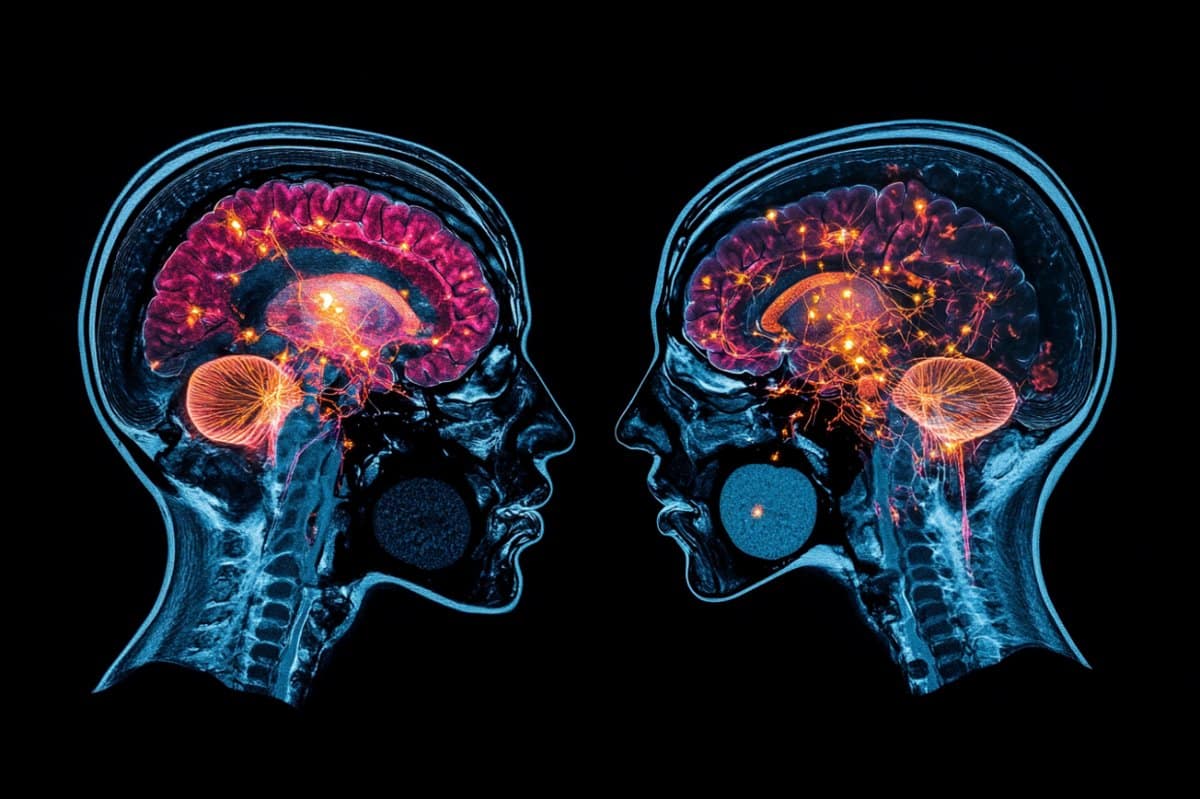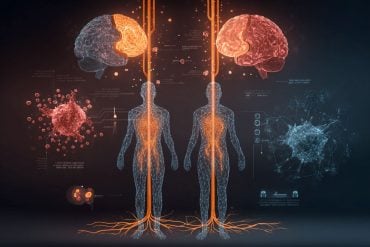Summary: New research reveals that chemotherapy can lead to rapid and widespread changes in brain connectivity in breast cancer patients. Using functional MRI scans, scientists observed disruptions in the frontal-limbic system and cerebellar cortex, regions involved in executive function and memory.
These changes intensified and expanded as treatment progressed, suggesting a cumulative impact on brain function. The findings may help explain the cognitive difficulties often experienced during and after chemotherapy, commonly known as “chemo brain.”
Key Facts:
- Rapid Brain Changes: Chemotherapy quickly alters brain connectivity.
- Affected Regions: Disruptions were found in areas linked to memory and decision-making.
- Progressive Impact: Connectivity changes worsened and spread over time.
Source: Wiley
New research published in the Journal of Magnetic Resonance Imaging has uncovered changes in brain connectivity during chemotherapy in patients with breast cancer.
In the study of 55 patients with breast cancer and 38 controls without cancer, investigators conducted functional magnetic resonance imaging scans of participants’ brains over several months.

Scans from patients revealed changes in brain connectivity, particularly in the frontal-limbic system (involved in executive functions) and the cerebellar cortex (linked to memory) throughout the course of treatment.
These changes got worse and spread more as chemotherapy continued.
“The findings suggest that chemotherapy can quickly disrupt brain function in breast cancer patients, potentially contributing to cognitive issues,” the authors wrote.
About this chemotherapy and neurology research news
Author: Sara Henning-Stout
Source: Wiley
Contact: Sara Henning-Stout – Wiley
Image: The image is credited to Neuroscience News
Original Research: Closed access.
“Altered brain functional networks in patients with breast cancer after different cycles of neoadjuvant chemotherapy” by Jing Yang et al. Journal of Magnetic Resonance Imaging
Abstract
Altered brain functional networks in patients with breast cancer after different cycles of neoadjuvant chemotherapy
Background
Cancer-related cognitive impairment (CRCI) impacts breast cancer (BC) patients’ quality of life after chemotherapy. While recent studies have explored its neural correlates, single time-point designs cannot capture how these changes evolve over time.
Purpose
To investigate changes in the brain connectome of BC patients at several time points during neoadjuvant chemotherapy (NAC).
Study Type
Longitudinal.
Subjects
55 participants with BC underwent clinical assessments and fMRI at baseline (TP1), the first cycle of NAC (TP2, 30 days later), and the end (TP3, 140 days later). Two matched female healthy control (HCs, n = 20 and n = 18) groups received the same assessments.
Field Strength/Sequence
rs-fMRI (gradient-echo EPI) and 3D T1-weighted magnetization-prepared rapid gradient echo sequence at 3.0 T.
Assessment
Brain functional networks were analyzed using graph theory approaches. We analyzed changes in brain connectome metrics and explored the relationship between these changes and clinical scales (including emotion and cognitive test).
Patients were divided into subgroups according to clinical classification, chemotherapy regimen, and menopausal status. Longitudinal analysis was performed at three time points for each subgroup.
Statistical Tests
An independent sample t-test for patient-HC comparison at TP1. Analysis of variance and paired t-test for longitudinal changes. Regression analysis for relations between network measurements changes and clinical symptom scores changes. Significance was defined as p < 0.05.
Results
Post-NAC, BC patients showed increased global efficiency (TP2-TP1 = 0.087, TP3-TP1 = 0.078), decreased characteristic path length (TP2-TP1 = −0.413, TP3-TP1 = −0.312), and altered nodal centralities mainly in the frontal-limbic system and cerebellar cortex. These abnormalities expanded with chemotherapy progression significantly (TP2 vs. TP3). T
opological parameters changes were also correlated with clinical scales changes significantly. No differences were found within or between HC groups (p = 0.490–0.989) or BC subgroups (p = 0.053–0.988) at TP1.
Data Conclusions
NAC affects the brain functional connectome of BC patients at TP2, and these changes persist and further intensify at TP3.
Level of Evidence
2.
Technical Efficacy
Stage 5.







